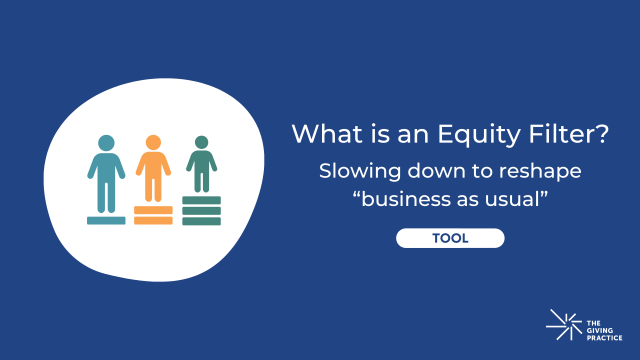
In the first part of this series, we discussed some of the rookie mistakes my team and I made when we started working to end family homelessness in the Pacific Northwest. Our impatience for impact led us to skip some of the vital relationship building and buy-in processes vital to achieving our goals. Philanthropy works through partners, but sometimes we forget that means strengthening the partnership aspects first.
What are the lessons learned from this? First and foremost, it’s about the relationships and boundaries we need to maintain as funders. Our grantees will always take our phone calls and meetings, and always smile and nod when we share new ideas or express our sense of urgency – even when they may not agree with our thinking and would very much prefer that we back the heck off. Our shoe size is so large that it’s really easy for us to step on the toes of our partners; vigilance and patience is required, even as the pressure we feel to get to impact raises our anxiety levels.
Remember to breathe, push back against internal foundation expectations to advance your work rapidly. Give your partners the time and space they need to make the work their own. Remind yourself, constantly, that you are never the smartest person in the room, and that the thinking of partners with long histories of working on the issues in the field will contribute greatly to the success of the work. The goal is to promote innovation while simultaneously encouraging creative dialogue that will enrich your collective efforts. That dialogue, if it is real, is a product of trust, candor, transparency and the ability to really listen to your partners in the field.
Here are a few of lessons learned that I continue to remind myself about:
- True systems change work isn’t a sprint, but a marathon. If we move too quickly at the start, our pace is unsustainable and we’ll be exhausted before the end of the race.
- Don’t start the race until your partners are ready to join you. This doesn’t mean endless delays up front, but it does mean getting to a shared understanding about strategic goals and specific interventions at the outset. Don’t assume that just because you think you know where the work needs to go, your partners will agree with you. Without a strong level of alignment up front, it’s likely that the work will be misunderstood, challenged or derailed over time. For example, I often reflect after a key meeting with grantees, and ask myself pointed questions:
- Who did most of the talking?
- Was I able to listen and learn as well as advance my own perspective?
- Was I open to and encouraging of productive feedback, even if it slowed the work down or took us in a different direction?
- Trust your partners enough to let them fail. Most real learning is experiential. Given the complexities and tenacities of the problems we are seeking to solve, chances are that our first efforts out of the gate will fail. Sometimes spectacularly. These failures are opportunities to learn and change course, rather than abandon our work and our partners. I have found that once I empower grantees and partners to act, they may move forward in ways that are different than what I envisioned. That’s when I remind myself to let go of worrying about the bean counting and output measures and focus more on whether the path my partners are taking is also a viable route to the outcomes and impacts we’re all seeking to achieve.
- Provide resources, time and bandwidth for capacity development among your partners. This an essential part of building and implementing an effective strategy. While not always the most popular type of investment with foundation trustees, grantee capacity development is the bedrock of systems change, and funders should support capacity building in order to get to results. Systems change requires dedicated staff, resources and organizational bandwidth if it is going to happen.
- Maintain transparency and candor in your partner relationships. Minimizing the power imbalance between grantees and partners is a challenging activity. One way I have tried to move towards this goal is to share as much of my team’s thinking as I can with my partners, even if it means they get to see the soft underbelly of the challenges, insecurities and frustrations faced by our sector on an ongoing basis. This transparency in relationships is essential to building trust, and trust is the key to the honest dialogue required to move the needle on the challenges our sector wants most to take on.
Ultimately, our work moved forward productively, and we’re seeing very positive impacts on the lives of homeless families. Getting there required the effective work of our partners in the field—we can do nothing without partners—strong leadership from multiple sectors, and a fundamental agreement that genuine collaboration and learning from our mistakes is the hallmark of successful systems change.
For more information about Reflective Practices, please click here.



